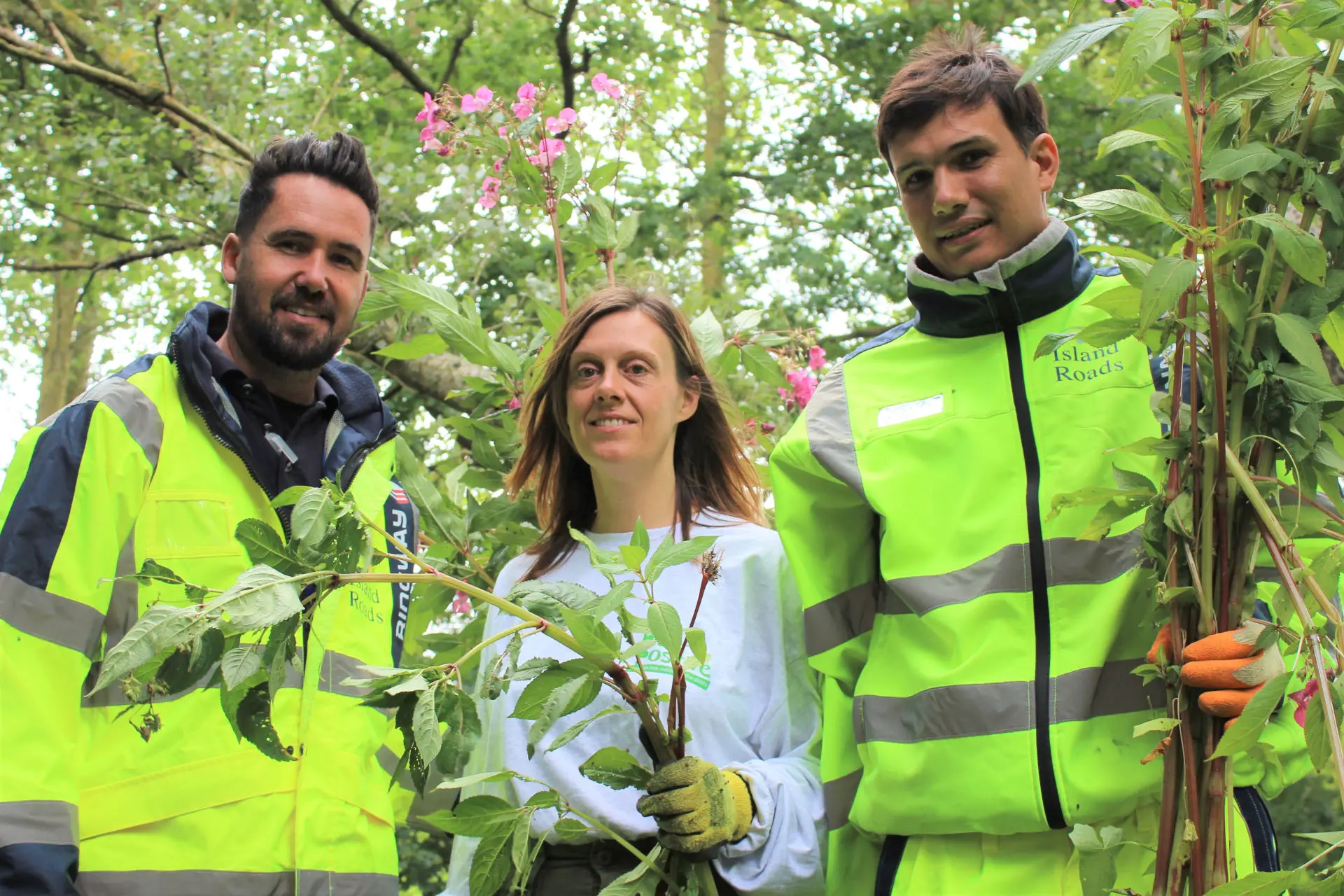Landowners are being urged to tackle the growing problem of Himalayan Balsam before it takes seed and threatens more of the Island’s waterways.
The appeal comes from Natural Enterprise who are currently in the frontline of the annual battle to control the invasive and destructive species.
A particularly invasive species
Himalayan Balsam (Impatiens glandulifera) was introduced to Britain from the Himalayas in 1839 by Victorian gardeners. A particularly invasive species, it quickly took hold in the wild and because the plant prefers damp conditions, it can be found growing on many of the country’s riverbanks and ditches across the UK.
It grows in dense clumps up to three metres in height and crowds out native plants before dying back in winter. This can cause problems on riverbanks as they are then left bare and susceptible to erosion. It can also cause navigation problems for boaters and can damage river habitats such as fish spawning beds.
The species (pictured) which has dark green leaves and bears large pink flowers shaped like a bonnet, which are then followed by hanging, green seed pods, is evident across the Island.
Flux: 800 seeds per plant
Carol Flux, Project Manager from Natural Enterprise, said,
“It’s a real problem as it spreads very quickly with up to 800 seeds per plant which, quite literally, explode from the seedpods travelling up to seven metres from the plant. Often the seeds are also transferred to rivers and they then travel downstream to start a new colony.
“Taking steps to control the plant by pulling it up before the seedpods develop is really important and should be done as soon as possible during July when seeding starts and kept in check up to October when the plant starts to die back. “
District stewards on the lookout
Island Roads district stewards have undergone some training so they can identify and tackle any Himalayan Balsam they encounter during their maintenance activity.
Following reports of its abundance in the vicinity the Newport to Sandown cycle track, between Horringford and Sandown, Island Roads contractors will be on the lookout when strimming back vegetation there next week (from Monday 20) under its contractual partnership with the Isle of Wight Council.
Legg: Fighting a losing battle without support of landowners
Kevin Legg, Operations Supervisor from Island Roads said:
“We remove around a metre of the plants either side of the cycle track around this time each year. It is a non-toxic plant so it is relatively straightforward to remove, but we are fighting a losing battle unless we can get the support of landowners to also help tackle it from within their property boundaries.”
Carol added:
“We really need a partnership approach if we are to diminish the efforts of this invasive species and protect the Island waterways. We have proved this can work on Wroxall Stream, but we have limited capacity to work on all water-courses. I would urge landowners to help us and act now to control the spread of this relentless weed.”
News shared by Gavin on behalf of Island Roads. Ed
Image: Island Roads Matt Shaw (left) and Ian Middleton (right) helping Nicola Wheeler, co-ordinator of the River Club group of volunteers, clearing Himalayan balsam from the Eastern Yar in 2017.





